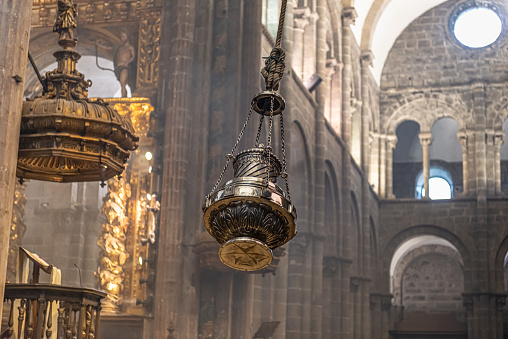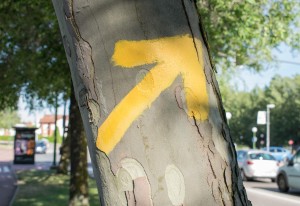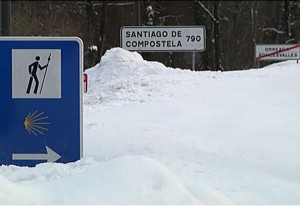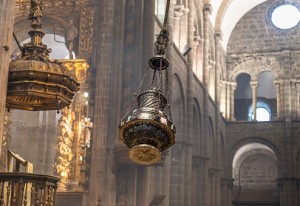Today in ALBERGUES DEL CAMINO we are going to talk to you about one of the most representative symbols of the Cathedral of Santiago, the botafumeiro.
We are aware that there are many pilgrims who still don’t know the function and origin of what is possibly the largest censer in the world. So, next, we are going to solve all your doubts. Take note!
Meaning of Botafumeiro
The word botafumeiro will sound strange to many of you, especially to those of you who are not from Galicia because it’s a Galician word.
Botafumeiro means censer and refers to the great braising of chains found in the Cathedral of Santiago, which is used to spread the aroma of different substances through a specific space.
Botafumeiro function
The botafumeiro has two main functions. On the one hand, it serves to enhance the religious ceremony. On the other, to set the sacred space in which the liturgy is celebrated.
Its aroma has a symbolic meaning linked to prayer and spiritual purification: “May my prayer rise before you like an offering of incense” (Psalm 141: 2).
To spread the smell of incense throughout the temple, the botafumeiro, weighing 53 kg, swings from the central dome of the cathedral towards the aisles. To move the Cathedral eight men are needed, this men are known as the “tiraboleiros”. In just a minute and a half, the botafumeiro reaches a speed of 68 kilometers per hour.
First reference of the botafumeiro
The first documented reference that exists of the botafumeiro is found in the 14th century in the Calixtino Codex, (the most famous medieval codex of the Jacobean pilgrimage).
Origin of the Botafumeiro
As we have mentioned at the beginning of this post, one of the main functions of the botafumeiro is to spread incense around the temple so that it is impregnated with its aroma. This tradition began in the 11th century with the aim of eliminating the unpleasant smell of pilgrims who came to the Cathedral after walking for long periods of time without taking a shower.
By this years, there were no hostels or pensions in which pilgrims could rest or take a shower. For this reason, the Cathedrals of the Camino were the only places where pilgrims could spend the night. In them, many pilgrims spent the night who had not cleaned themselves for long periods of time, so, as you can imagine, a very unpleasant smell was concentrated there. Incense was used to drive away the stench they gave off.
As there were many pilgrims who came to the Cathedral of Santiago, a large incendiary was needed to be able to eliminate the smell. It’s for this reason that the Santiago botafumeiro is so big.
Botafumeiro calendar
The Botafumeiro follows a calendar of liturgical celebrations in which it comes into operation as part of the mass. Outside these dates, it must be requested in advance and must be paid for by individuals.
Fixed dates
- January 6: Epiphany.
- Easter Sunday (39 days after Easter).
- May 23: Anniversary of the Battle of Clavijo.
- Pentecost (50 days after Easter).
- July 25: Festivity of Santiago Apóstol.
- August 15: Asuncion.
- November 1: All Saints.
- Festivity of Christ the King (Sunday before the first Sunday of Advent).
- December 8: Immaculate Conception.
- 25th December, Christmas.
- December 30: Transfer of the Holy Apostle.
Remember that in our social networks we will keep you up to date with all the news, follow us on Facebook and Instagram!
In addition, we encourage you to share with us your experience traveling the Camino de Santiago on our social networks by tagging us or including the hashtag #alberguesdelcamino in your post. We look forward to your photos!















